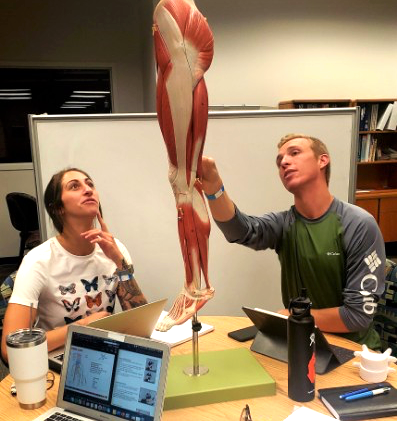Perhaps you have taken the last few days off from studying to enjoy the Florida sunshine or catch up on your favorite Netflix show…well, I hate to be the bearer of bad news, but midterms are here! If you have read my previous blog posts, then you already know I am a big advocate of study groups!
While studying independently, you may focus on one area more that you believe was highlighted, while other students may have found different focuses of emphases. Then you meet with classmates, quiz each other, and use your creative minds to generate mnemonics to better remember the material. A friend may ask you a question, such as,“What is the origin of the lateral femoral cutaneous nerve and how does it get compressed?” and you think to yourself, “Wait…When did we learn that?” After a bit of discussion, you now have a better handle on that topic (Answer: Origin is the anterior rami of L2 and L3; nerve can get compressed by the inguinal ligament)…and have bookmarked to yourself that you definitely need to review that when you get home!
While on campus, take advantage of all the resources the school offers. We recently discovered anatomical models in the library that have proven to be very useful in visually seeing the muscles and nerves. Having visual aids is a fantastic way to enhance group discussions and better understand material.

In the (clearly candid!) picture, Maria and Jared discuss the route of the sciatic nerve along the buttock and leg, its potential compression by the piriformis muscle, the associated symptoms, and the lumbar orthopedic assessments we could perform to diagnose the condition. For example, Bonnett’s Sign is a test in which the patient is placed in a supine position, the affected leg is raised with a combined hip adduction and internal rotation. If the patient has increased radicular pain, then that would indicate the presence of piriformis syndrome.
Test your knowledge: What is the root composition of the sciatic nerve?
Answer: L4, L5, S1, S2, and S3
{{cta(’88d1f92c-eec6-45a6-ada7-5a0fa717195b’)}}




0 Comments